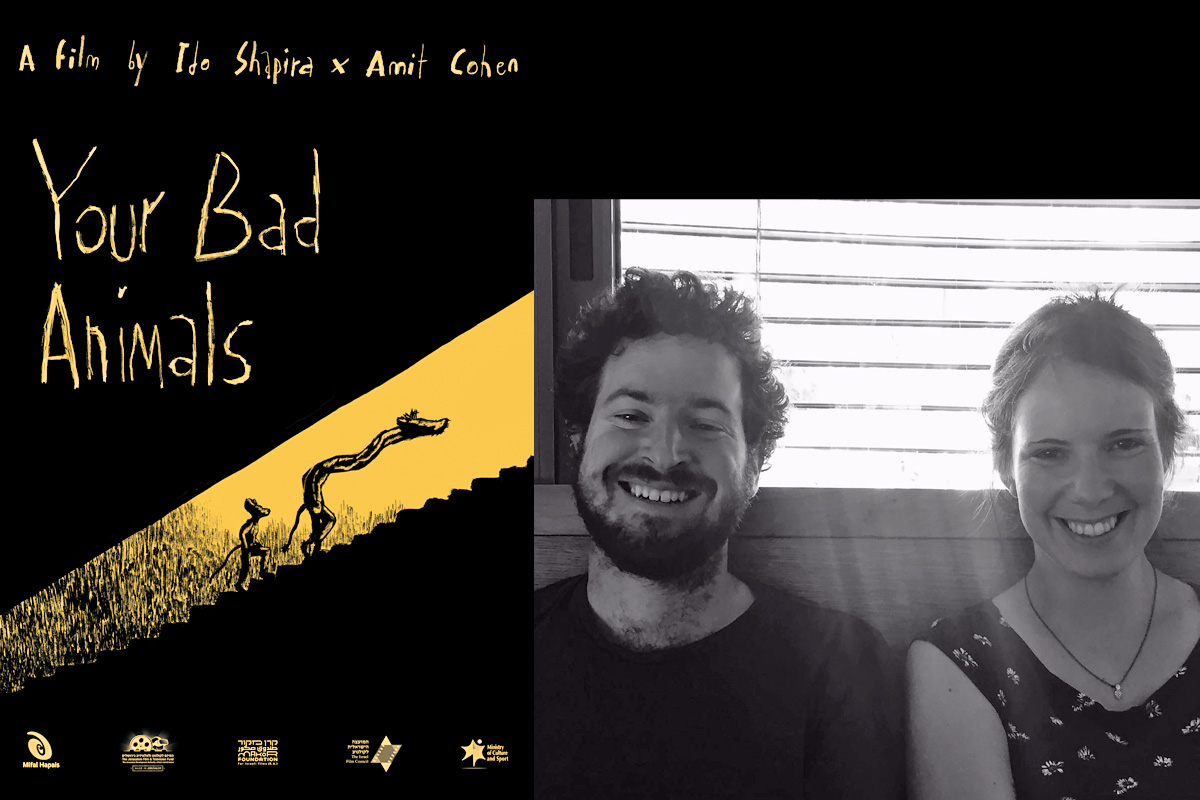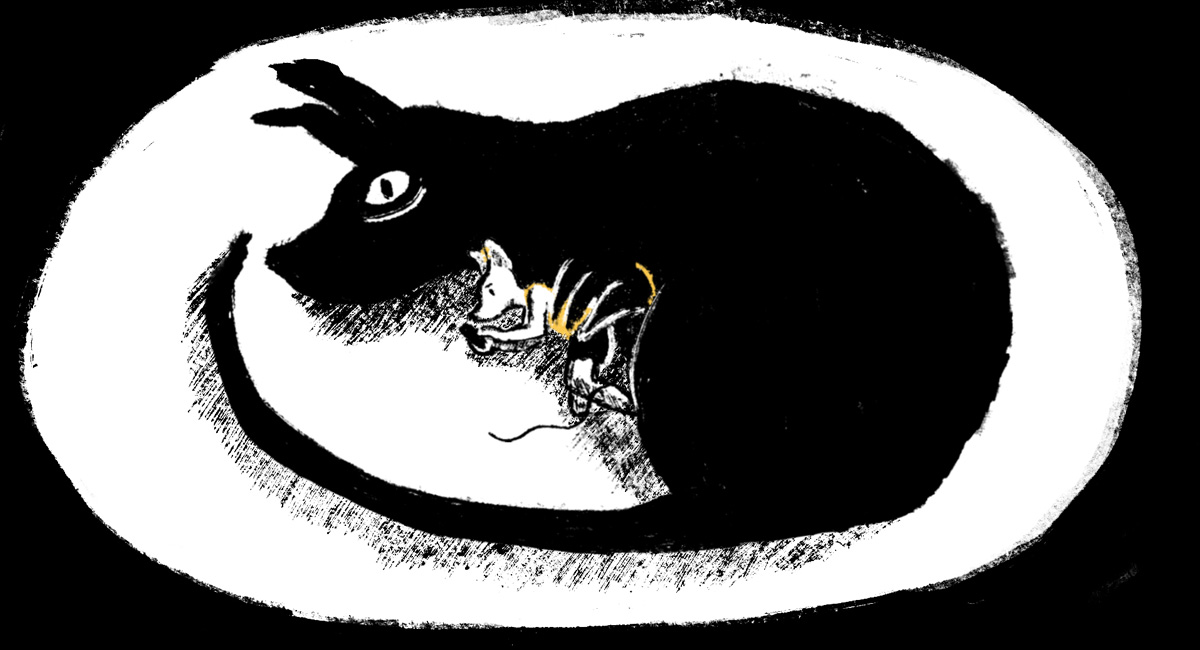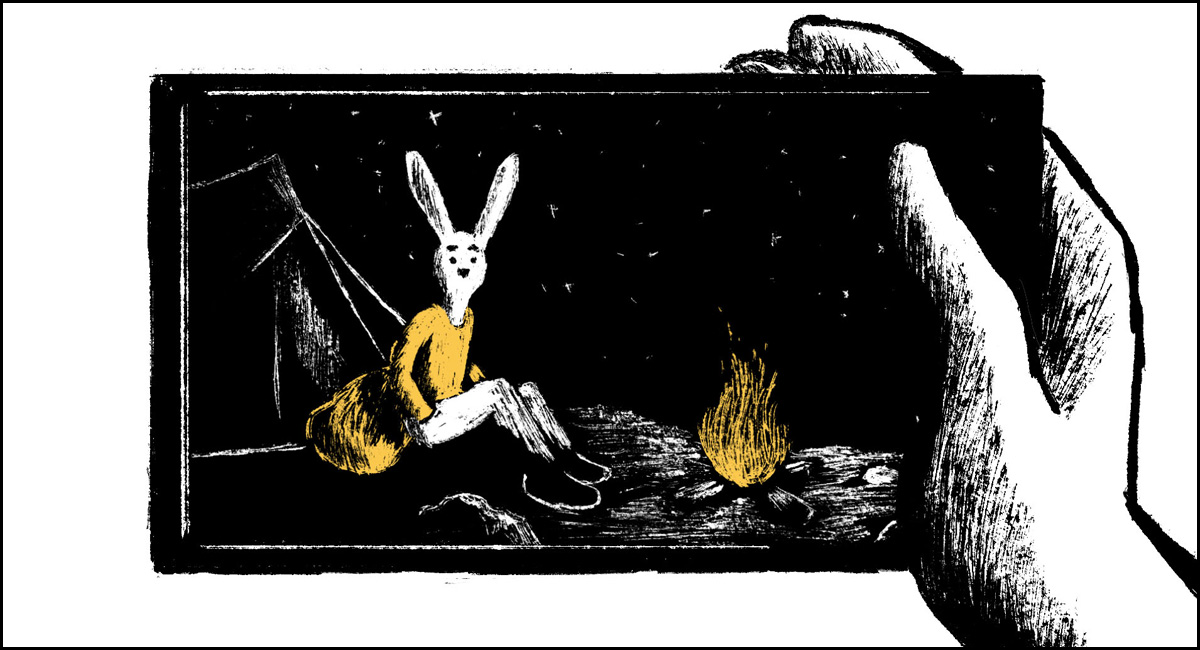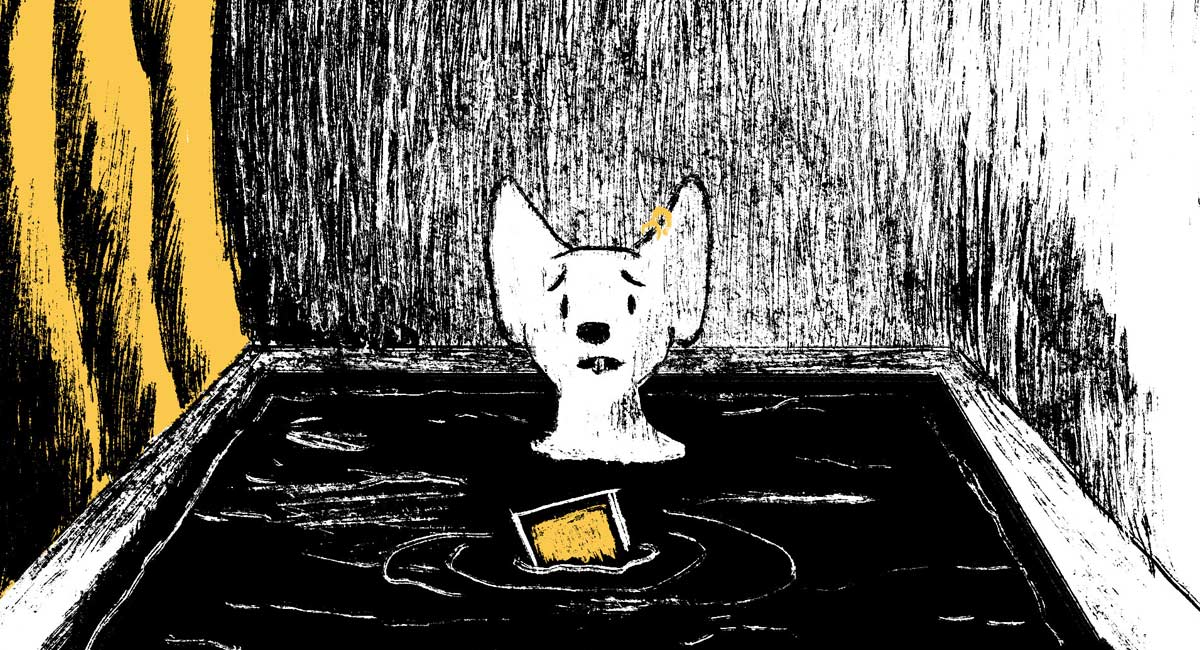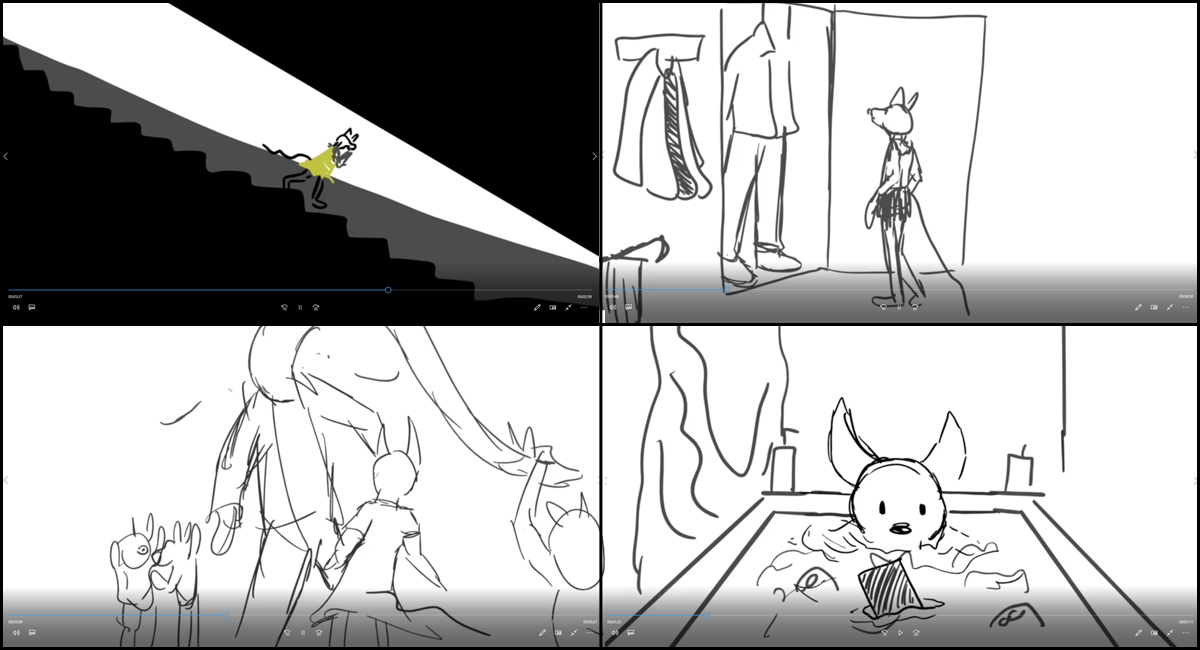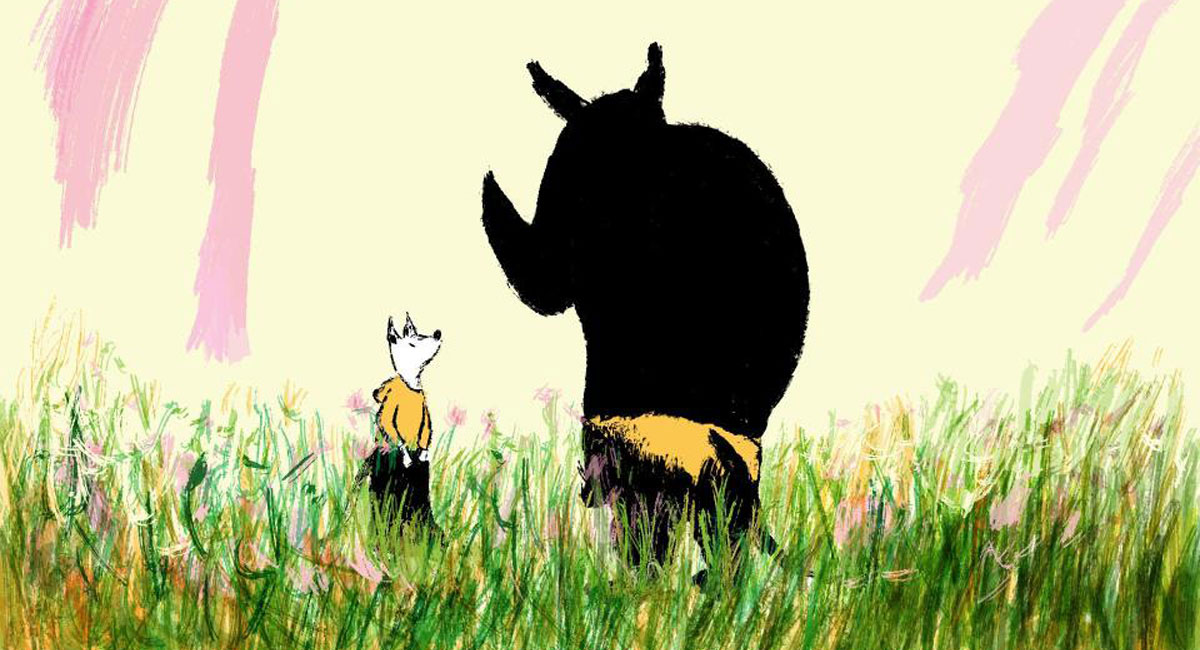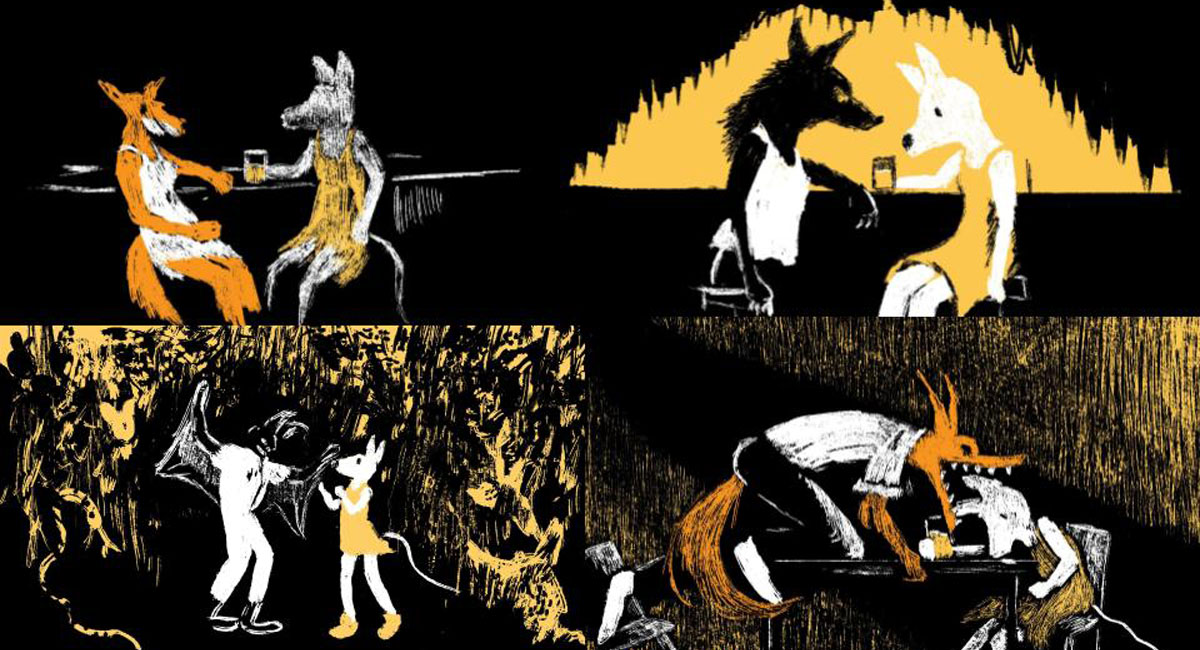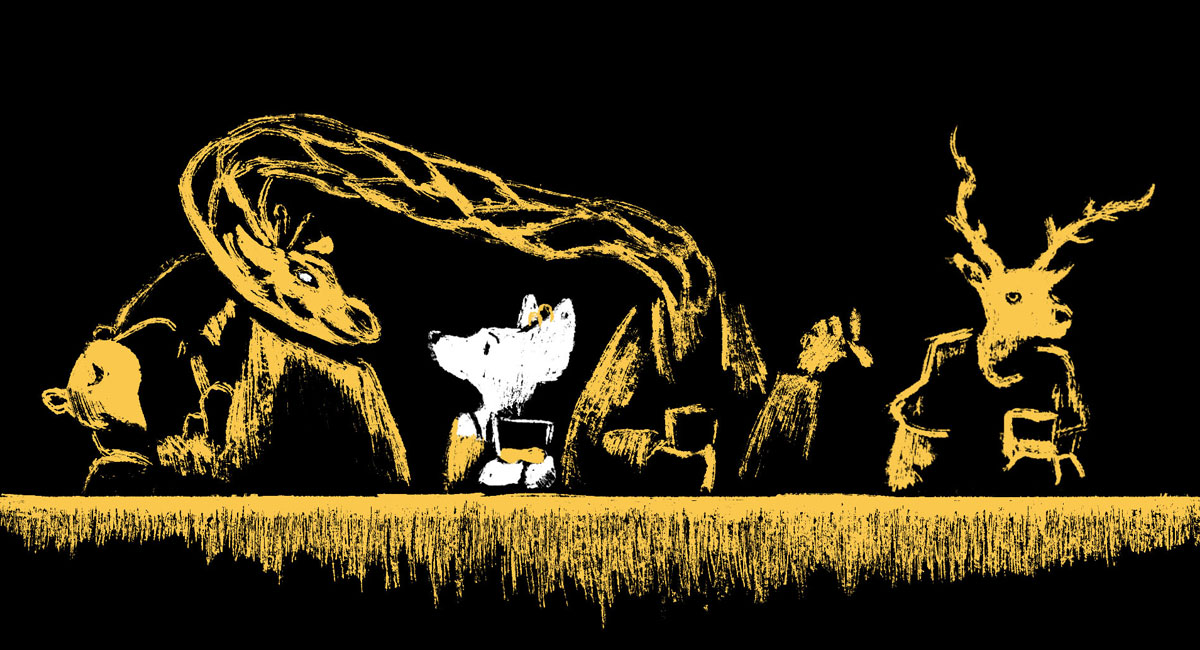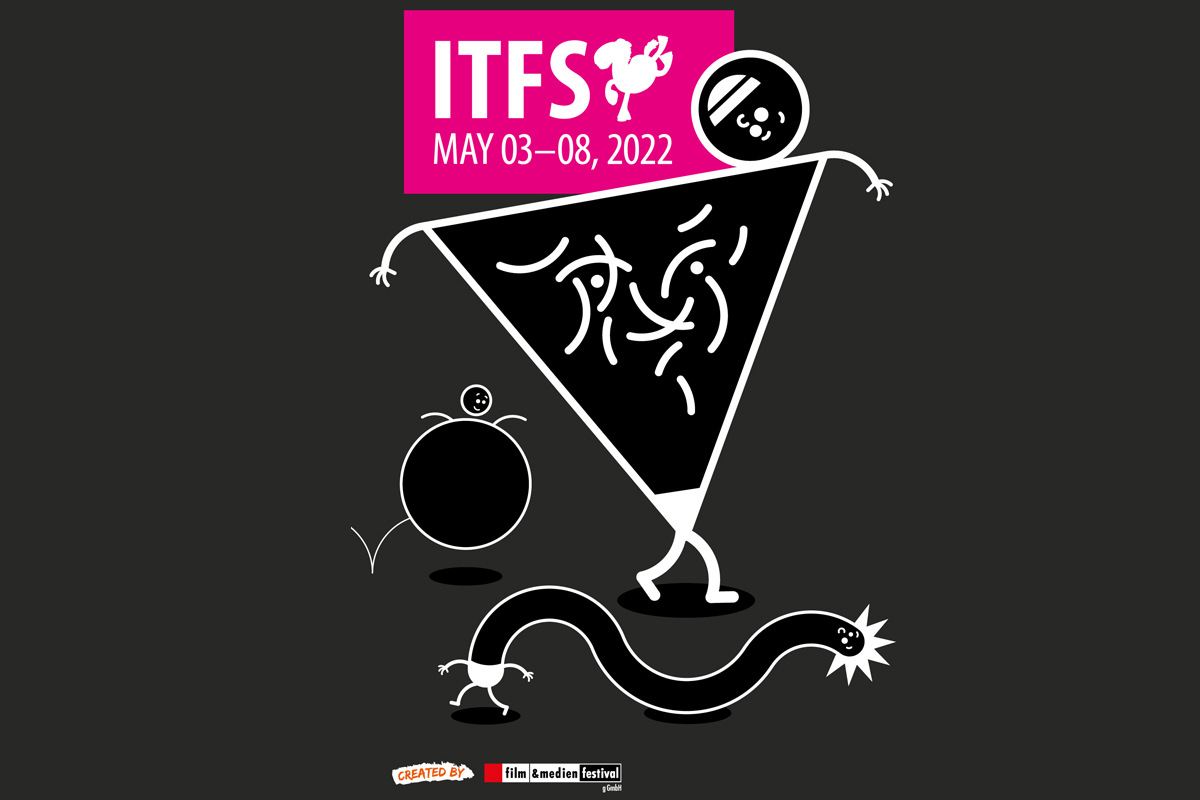Synopsis
Rachel, a young, rebellious mouse, lives with her giant domineering mother under the ground. She finds refuge from the harsh reality by falling in Virtual love with men. When a handsome giraffe knocks on her door, Rachel starts dating dangerous animals around town, and persists in finding her own way against the forces that try to use or depress her sexuality.
Your Bad Animals
Directors: Ido Shapira and Amit Cohen
Authors: Ido Shapira and Amit Cohen
Music: Ori Kadishay
Target Audience: Adults
Technique: 2D digital / 3D digital.
Format: 11:26
Your Bad Animals is a story with a theme on the frailty of adolescence, a young girl’s spiritual independence, and her own awareness and confirmation of her own sexuality, told at a light-hearted pace. The film was nominated for the “International Competition” category at the 29th Stuttgart International Festival of Animated Film (ITFS).
I found three aspects of the film interesting: The visual design of the characters, which is reminiscent of children’s picture books with contrasting dark tones, that creates a world of mysterious charm. The lean story structure, which includes only important scenes, that keeps the viewer engaged in the story and leading them throughout the film. And finally, the metaphor that all the characters are animals enhances the differences between the individuals who form society, including family, and highlights the frailty surrounding human adolescence.
We heard the insightful story behind the film from Amit Cohen and Ido Shapira, the directors and authors of the film.
Interview with Amit Cohen and Ido Shapira
Hideki Nagaishi (HN): What message or experience would you like to deliver to the audience through this film?
Amit Cohen and Ido Shapira: We wanted to present a realistic experience of a young girl discovering her sexuality in a turbulent and dangerous world, conflicting with her domineering and over dependent mother. We didn’t want to convey a didactic and absolute statement, but to experience the girl’s point of view with her, as an ambivalent struggle that has no right or wrong answer.
HN: Where did the initial idea of the story and characters come from?
Amit Cohen: I wanted to create a feminine film that revolves around the relationship of a mother and a daughter. It was important to me to bring forward a sense of intimacy, closeness and symbiosis, alongside sexuality, that’s beginning to take a more dominant place in the main character’s life. In fact, for her to leave her familiar and closed-off world for the outside world of the living filled with a variety of strange animals, is an allegory for my journey of leaving my hometown, a relatively small and remote village, to Jerusalem; The big city, a madhouse and a seductive place that’s full of adventures, which might be dangerous.
Ido Shapira: I wanted to make a coming of age film about the dating world, that specifically because of the dating apps, a new, intense and hallucinatory world has been created. I had a vision to make a film that is both dark, depressing and intense , yet is still delightful to watch, filled with humor and irony, and has a relatable main character.
After figuring out how to combine our ideas and desires into one coherent story, coming up with the characters came quickly: the curious girl, the various male animals she meets and her domineering mother.
HN: What did you take care in the most while writing the story of the film?
Amit Cohen and Ido Shapira: The script is full of elements: There are 2 main characters, 3 male suitors, several locations, and it all happens in 11 minutes. It was very important for us that the audience will have an emotional connection with our protagonist, and to produce an intense yet clear chain of events that would be easy to follow, and would draw the viewer into the visual experience of the film without hesitation.
HN: What were the aims and benefits of using animal characters to tell this story?
Amit Cohen and Ido Shapira: After realizing how our desires can connect within the story, we chose to present the characters as mice, and that the rest of the characters would be predators that can threaten them, yet attract them and communicate with them in surprising ways. More so, we decided to make the mother quite literally a huge mouse, while the girl and the rest of the characters in the film are partly human. These design choices helped us show their different relationships with the outside world. The decision to use animals made the world more diverse and surprising, helping us realize the personality and the essence of each character.
HN: How did you develop the characters’ inner lives? What did you pay attention to when you understood and depicted the conflicts in their minds?
Amit Cohen and Ido Shapira: When we wrote the character of Rachel, our leading character, we imagined her as someone who is on the one hand obedient and very close to her mother, and on the other hand curious, lonely and with a desire to fall in love. We wanted to follow her journey of curiosity, from falling in love with the wrong, problematic creatures, to the realization of her sexuality, in her own terms.
With the mother, we wanted to display a threatening and frightening creature, yet also a dependent and depressed character, who loves her daughter and tries to protect her. We tried to show these softer and needy sides of her, mostly through her subtle acting.
HN: What do you think are the strengths of your visual style to portray this story?
Amit Cohen and Ido Shapira: The film’s style consists of three primary colors- black, white and yellow, and is painted with coarse and rugged brushes. With those tools in mind we created our unique style and designs; inaccurate and without much detail, but powerful and intense, to create a feeling of restlessness, discomfort and being threatened. We used our color palette to create a difference between the two worlds. We created a dramatic and ironic look, and especially with the help of yellow, we introduced sexuality to the story: At the beginning of the film, the yellow doesn’t exist. It slowly creeps through Rachel’s phone and with the giraffe’s appearance. It gets more intense and dominant through the sex scene and then it disappears – leaving Rachel to deal with the consequences.
HN: What did you take care in when it came to the film’s music? And how was the co-creation with Ori Kadishay, the music composer for the film?
Amit Cohen and Ido Shapira: As soon as we started the production and began realizing the film’s style, we realized that music and sound should first and foremost correspond with the animal world and induce tension on the viewer. We met Ori at “HaMazkeka” (a unique family-run concert bar in Jerusalem), where Ori’s recording studio resides. Our first collaboration with Ori was with our graduation film, “Hounds”. Naturally, we knew the music played at the parties should sound like Jerusalem’s nightlife scene- a combination of techno and groove. We asked Eyal Samson, our mutual friend who also composed our third year film in Bezalel, “Hunters”, to join the production and work with Ori on the music and sounds.
In the sex scene we wanted to create a parallel, intimate and warm world. Luckily, we came across Colleen’s track “Nice and Simple”. Initially we used the track only as a guideline, but it just worked too well, so we asked her if we could actually use it, and another wonderful collaboration was made.
The sound task wasn’t simple for the rest of production either, because we had many elements and a wide range of emotion to convey. We had a very specific vision in mind that was hard to express with words, and it required intense research. In the end, what inspired us (and Ori) to understand how to approach the soundtrack, is none other than Cristobal Tapia de Veer, who created the soundtrack for “Utopia” and “The White Lotus”, a mixing of sounds that gives a disturbing feeling, with instruments that reminds us of the jungle and with a little touch of humor.


